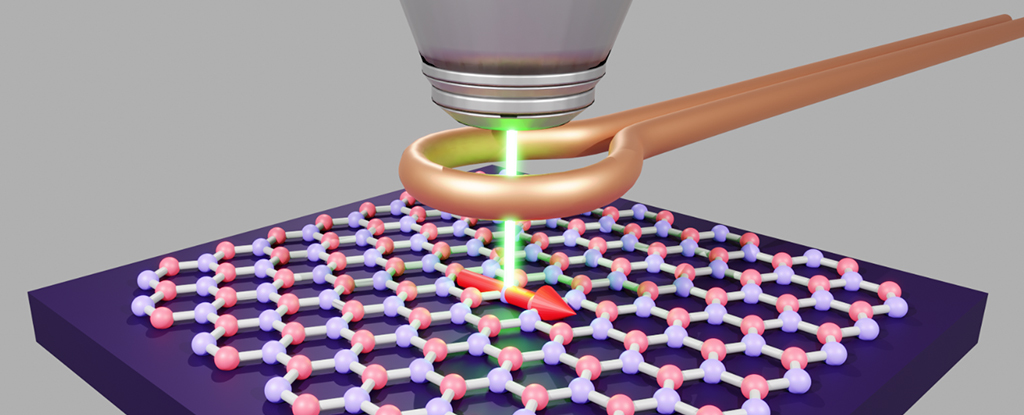Microscopic chinks in material just several atoms thick have the potential to advance a multitude of , new research shows – getting us closer to the widespread use of quantum networks and sensors. Right now, storing quantum data in the spin properties of electrons, known as , requires a very particular and delicate laboratory setup. It's not something you can do without a carefully controlled environment.
Here, an international team of researchers managed to demonstrate observable spin coherence at room temperature, using the tiny defects in a layered 2D material called (hBN). "The results show that once we write a certain quantum state onto the spin of these electrons, this information is stored for around one millionth of a second, making this system a very promising platform for quantum applications," physicist Carmem Gilardoni from the University of Cambridge in the UK. "This may seem short, but the interesting thing is that this system does not require special conditions – it can store the spin quantum state even at room temperature and with no requirement for large magnets.

" The layers of hBN stay locked together through molecular forces built into the material itself, but defects can emerge when the material is synthesized or processed. This gives tiny places where electrons can be trapped. Not only were the researchers able to trap and observe electrons in hBN defects, they were also able to manipulate them using light.
This is a first for at normal, ambient tempe.
















